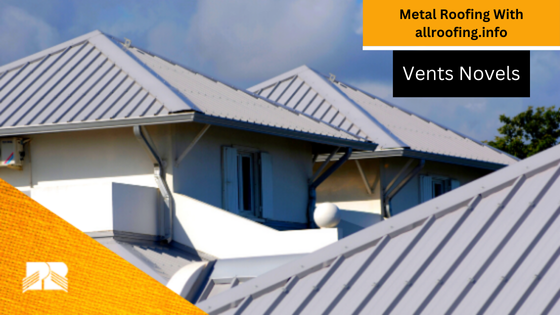Metal roofing has become a popular choice for both residential and commercial properties, offering a blend of durability, aesthetic versatility, and environmental benefits. AllRoofing.info is a comprehensive resource that delves into all aspects of metal roofing, from the basic definitions to advanced installation techniques. This article aims to explore the various facets of metal roofing, providing a deep dive into its benefits, types, installation processes, and maintenance tips to help homeowners and builders make informed decisions.
Benefits of Using a Metal Roof
Metal roofs offer numerous advantages over traditional roofing materials like asphalt shingles or tiles. These benefits include:
- Longevity: Metal roofs can last 40-70 years, depending on the material, significantly outlasting materials like asphalt.
- Durability: They could tolerate large winds, are impact-resistant, and do not corrode or crack.
- Safety: Metal roofing is fire-resistant, which is crucial in areas prone to wildfires.
- Energy Performance: Reflective qualities of steel roofs minimize chilling expenses by highlighting solar radiant temperature rather than absorbing it.
Different Types of Metal Roofing
Metal roofs come in a variety of materials and styles, including:
- Steel: Robust and economical, ideal for most climates.
- Aluminum: Lightweight and highly resistant to saltwater corrosion, suitable for coastal areas.
- Copper: Offers a distinctive appearance with excellent durability, often used for historic buildings.
- Zinc: Highly durable and corrosion-resistant, with a lower melting point, which makes it energy-efficient to produce.
Installation: Metal Roofing Keeps Your Home Cooler Throughout the Year
One of the standout features of metal roofing allroofing.info is its ability to keep a home cooler during hot weather. The secret lies in its reflective surface, which bounces back the sun’s rays, significantly reducing heat absorption and the load on your air conditioning system. This reflective capability can be enhanced with special paints or granular coatings that increase the emissivity of the roof surface.
Step-by-Step Guide to Installing Metal Roofing
- Choose the Right Material: Depending on your climate and budget, select the appropriate metal.
- Measure Your Roof: Accurately measure your roof to determine how much material you will need.
- Remove Old Roofing: If applicable, carefully remove the existing roofing material and prepare the roof surface.
- Install Underlayment: Roll out and secure the underlayment for additional insulation and moisture protection.
- Lay the Panels: Start from the roof’s edge, aligning each metal panel before securing it in place.
- Seal and Finish: Apply sealant along the edges and install the finishing touches like ridge caps and flashing.
Tips for Maintenance
- Regular Inspections: Check always for just about any signs of injury or wear, specially following extreme weather.
- Keep it Clear: Eliminate any dust, leaves, or limbs that collect on the roof.
- Prevent Scratches: Use caution when walking on the roof or placing equipment on it.
- Rust Prevention: Treat any small rust spots immediately to prevent spreading.
Conclusion
Investing in metal roofing is a wise decision for those looking for a long-term, durable, and energy-efficient roofing solution. AllRoofing.info provides a wealth of information that can guide you through the process of choosing, installing, and maintaining a metal roof, ensuring that your property is protected and your roof lasts for decades. Remember, the key to a successful metal roof installation lies in proper planning, choosing the right materials, and regular maintenance.


